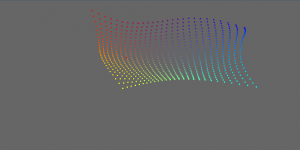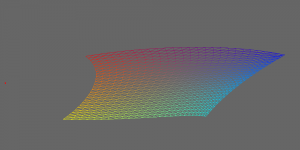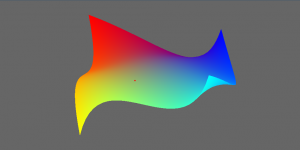Let’s not sugar coat it, streaming video is a complex topic. If every browser had the same video player, it might make things a bit easier. But of course, they don’t. So, I’ll try to dumb this down, keep it short and make it as simple as possible.
If you have some RTSP H.264 streams that you want to stream to Firefox or Chrome with minimal latency, you might be in for a treat. Using nodejs and ffmpeg, we can serve up the streams while convincing the browser to play the stream immediately while buffering with minimal latency. How? As I found, it is not easy. But let’s act like it was, shall we?
In a nutshell, a browser first makes an initial GET for the url and the server replies with a video/mp4 mime type header with 200 status. We start up ffmpeg and have it write to stdout but we don’t send any of the data on this request. This behooves the client to make a range request. Next, on the range request, the client is expecting a file so it asks for portions of it. Here, we always tell it the start is 0 and do some math to tell it what range and length to expect, based on the bytes we have so far, and send 206 status. Then, we start sending the data. Getting this right was only half the battle though..
TL;DR, I checked the agent string to see if it’s chrome or not. If it’s chrome, we use `ffmpeg -f matroska` but for firefox, we have to use `ffmpeg -f mp4` since it doesn’t have matroska support. The confusing thing was that the mime type could not be video/x-matroska because that caused the browser to attempt downloading the file. Now on to the code.
The following is a snippet to stream RTSP directly to firefox or chrome browsers:
function serve_rtsp(req, res, ip, user, pass) {
user_agent_string = req.get('user-agent');
const range = req.headers.range;
if (range)
{
if (!running)
{
res.end();
return;
}
const start = 0;
const end = Math.max(total_length, 1024 * 1024 * 32);
const chunk_size = end + 1;
res.writeHead(206, {'Accept-Ranges': 'bytes', 'Content-Range': 'bytes ' + start + '-' + end + '/' + chunk_size, 'Content-length': chunk_size, 'Content-Type': 'video/mp4', 'Connection': 'keep-alive'});
ffmpeg.stdout.unpipe();
ffmpeg.stdout.pipe(res);
return;
} else
{
res.writeHead(200, {'Accept-Ranges': 'bytes', 'Content-Type': 'video/mp4', 'Connection': 'keep-alive'});
}
if (running)
{
ffmpeg.kill("SIGINT");
total_length = 0;
clearTimeout(ffmpeg_timer);
}
if (user_agent_string.includes("Chrome"))
{
ffmpeg = child_process.spawn("ffmpeg",[
"-i", 'rtsp://' + user + ':' + pass + '@' + ip + ':80',
"-f", "matroska", // File format
"-c", "copy", // No transcoding
"-t", "60", // Timeout
"-" // Output (to stdout)
]);
}
else
{
ffmpeg = child_process.spawn("ffmpeg",[
"-i", 'rtsp://' + user + ':' + pass + '@' + ip + ':80',
"-f", "mp4", // File format
"-movflags", "empty_moov+frag_keyframe",
"-c", "copy", // No transcoding
"-t", "60", // Timeout
"-" // Output (to stdout)
]);
}
running = true;
res.end();
ffmpeg.stdout.on('data', ffmpeg_handle_data);
ffmpeg_timer = setTimeout(function() {
running = false;
}, 60000);
}
I hope this is helpful to someone out there. If you do find it useful and want to say thanks, you can donate a coffee on northfield.ws.


